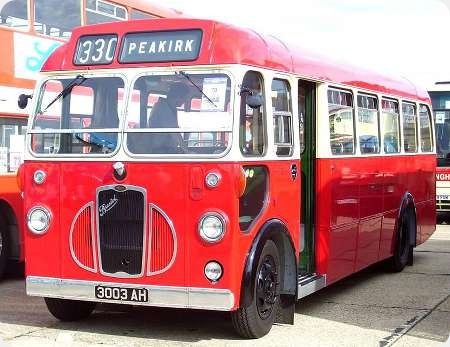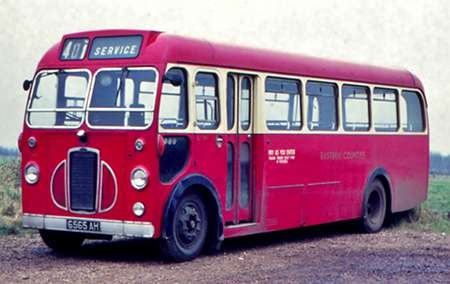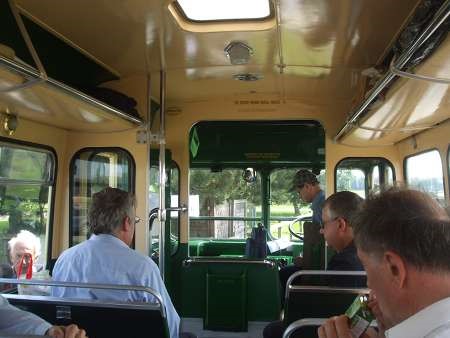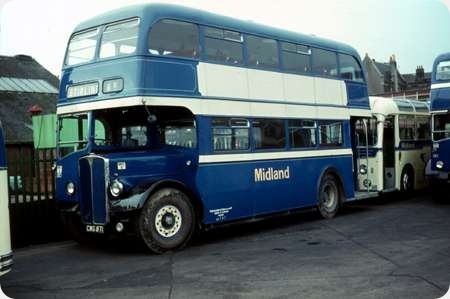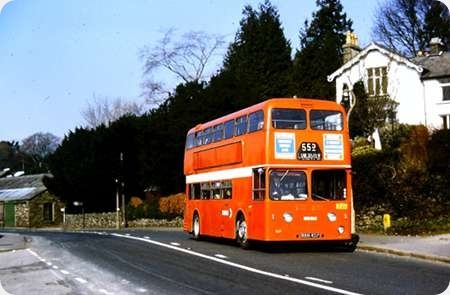Eastern Counties – Bristol SC4LK – 3003 AH – LC 556
Eastern Counties Omnibus Company
1959
Bristol SC4LK
ECW B35F
I have the only fully restored red and cream Bristol SC4LK! It is ex Eastern Counties LC 556 (3003 AH). It was new to ECOC in Jan 1959 and served the company for 11 years. Following withdrawal in 1970, it passed via Ben Jordan, the famous Norfolk bus dealer, to Monk Contractors of Warrington as a staff bus. From there it passed to dealer, Martins of Middlewich, who sold the bus on to the Archbishop Sancroft RC High School in Stoke on Trent, where it served as a school bus until 1983. Whilst there, it made the long journey to Brittany in North East France, taking pupils of the school on a field trip. Upon withdrawal by the school, the bus passed to an Oxford bus enthusiast for preservation, but sadly the owner became ill and the bus sat in his garden for a number of years under trees where it slowly adopted an all over green livery! When the enthusiast passed away, his widow sold the bus to Ward Jones, a motor dealer and enthusiast in High Wycombe, together with an Eastern National example (608 JPU) which the Oxford enthusiast also had in his garden. I discovered the bus ‘through the grapevine’ in the summer of 1993 and made an offer for it, which involved salvaging usable parts from the Eastern National one to make the Eastern Counties one complete. The bus was then towed all the way back to her old operating territory and stored on a farm in south Norfolk. Serious preservation then got underway over the next eleven or so years and the restoration was finally completed in Summer 2005. This was my third preservation project, the other two being LM 452 (3014 AH) 1978-84 and LL 711 (KNG 711) 1984-88, both ex Eastern Counties and a 1958 MW5G and a 1950 L5G respectively.
Photograph and Copy contributed by Patrick Burnside
12/03/15 – 16:38
Like Patrick’s other vehicles, this is a superb restoration. It is one of only two SCs that I have ridden on, the other being an Eastern Counties one which was working a crew operated Norwich City service in 1973 at a time of extreme vehicle shortage.
Nigel Turner
12/03/15 – 16:39
Fascinating Patrick, and a creditable restoration. If you have one, could you post a ‘before’ photo?
Chris Hebbron
12/03/15 – 16:40
I used to travel to and from school between Ely and Soham on this type of bus (1960)…maybe even this one, if it ever worked from Ely depot.It would have been nearly new then…Years later, and I found myself driving one or two of them at Cambridge, just before they were withdrawn (1970). They were very noisy…lots of rattles…and that awful gearbox, plus having to turn to the left and issue tickets to passengers boarding behind you. They were referred to by all as LC’s. However, 3003 AH looks really well restored, and the picture brings back happy memories of my time at Hill’s Rd depot, Cambridge.
Norman Long
14/03/15 – 12:54
There is a shot of this bus when it was owned by the Archbishop Sancroft on www.sct61.org.uk
Chris Hough
13/10/15 – 08:48
I only drove an SC (ECOC LC) for a short movement when I was area engineer at ECOC, but the drivers used to tell me that it was the (David Brown off the shelf) gearbox ratios that caused most difficulty with a large ratio jump between 2 and 3 or was it 3 and 4 and hence the need to run the engine to high revs before the up change. Incidentally I saw the prototype SC in service with BT&CC (or was it BOC by then?) – after which they no doubt decided it was not for them. Bristol territory is hilly and I think only one back axle ratio was available for the SC. All Bristol’s Bristol buses had the lowest axle ratio available compared to other operators (In the K, L and MW days it was 6:1 rather than the 5.5:1 – didn’t do much for top speed until the 5th gear appeared on KSWs).
I attach a photo of LC566 – the only one with an all fibreglass body (no panel strapping!) parked at Melton Constable in Autumn 1968 on Service 401 one of the earliest rail-replacement routes that replaced the Gt Yarmouth – Kings Lynn railway.
Geoff Pullin
12/01/17 – 09:10
Responding to Geoff Pullin’s note on the SC, I think the big jump is between 2nd and 3rd. Top speed in 2nd is 15mph, but in 3rd at 15mph the engine struggles. My own reminiscences of the SC as a Bristolian are that I had never even seen one until the opening of the Severn Bridge after which I used to regularly go to such places as the Forest of Dean and Abergavenny where Red & White operated a total of 7. The cab interior is strange, particularly the partition at the rear of the cab and despite seeing them on the road quite a few times in the late 1960’s I don’t think I realised quite what the inside looked like until seeing interior shots on t’internet.
Peter Cook
12/01/17 – 13:56
There was a second fibreglass bodied SC, a "self-coloured" green one for Crosville, 237 SFM, fleet No. SSG 664.
Allan White
13/01/17 – 06:52
Lincolnshire RCC had quite a lot. Fine on the flat lands of South Holland, but contrary to popular opinion, Lincolnshire isn’t ALL flat. I remember travelling on an SC one dark damp Sunday evening about 1959, route 3 from Cleethorpes to Lincoln, and it made heavy weather, very slow and noisy, with lots of 2nd gear, over the Wolds section between Ravendale, Binbrook and Tealby.
Stephen Ford
13/01/17 – 06:53
This is a photograph I took on board Patrick’s SC at the Old Buckenham Rally in August 2015. Patrick is at the wheel. I had never ever ridden on one of the type before.
David Slater
13/01/17 – 09:37
I drove the SC type for Tillingbourne – 2 ex ECOC (TVF 537 & 6560 AH) and 1 ex Crosville (790 EFM) – quite often, usually on the hilly Guildford – Peaslake route that had to surmount the North Downs between Merrow and Shere. The gear positions from the left were: forward for reverse gear, back for first, over and forward again in the central gate for second, back for third, then over to the right and back again in a ‘U’ movement for fourth, and forward from there to engage fifth. One normally started off in 2nd gear, but the detent spring protecting the left hand gate was pretty weak and one had to be careful that reverse wasn’t engaged in error. As I recall, the gap in ratios was between 3rd and 4th, and 5th was a feasible option only on the level and downhill. The SC was an idiosyncratic little machine, and keeping time with it was a challenge, but it was a decent enough little bus and I quite enjoyed driving the type. Yes, it was quite noisy, but nowhere near as raucous as the ear splitting Seddon Pennine IV. Those 3.8 litre 4LK engines were tough little workhorses.
Roger Cox
13/01/17 – 10:06
Lovely period interior picture: I assume that the cream colour is a proper Tilling shade as it looks like that rich homely nicotine colour of fond memory. Notice how it also looks as if the ticket machine is totally unprotected and positioned for a quick exit… and not a camera in sight! Happy days…
Joe
14/01/17 – 07:02
It may be that the ECOC ones had cream ceiling and upper interior sides. The Red & White ones had Rexine on the insides of the window pillars and luggage racks of a colour which might be charitably described as mushroom or uncharitably as sludge. I can only assume the idea was that it would not show cigarette smoke staining as it was pretty much smoke-stain colour in the first place.(I can post a picture to illustrate the colour if anyone is interested).
Ceilings were (?broken) white when they started apparently. I remember these colours also as being applied in similar places to the BOC MW saloons of the same period.
Peter Cook
Quick links to the - Comments Page - Contact Page - Home Page
